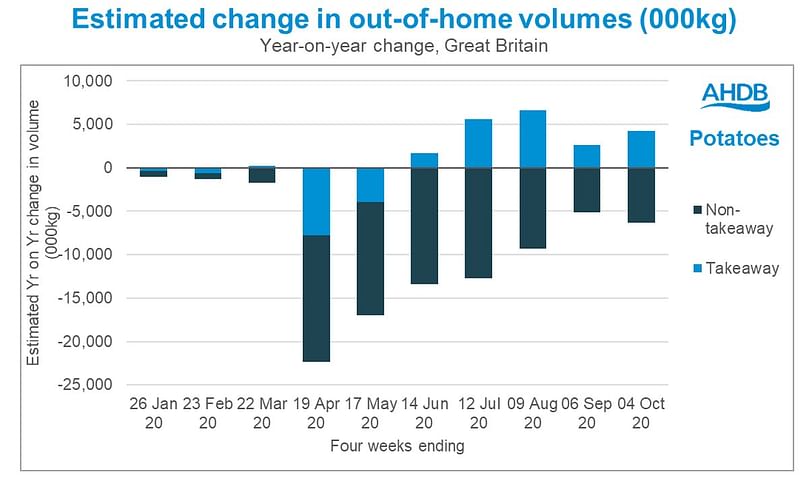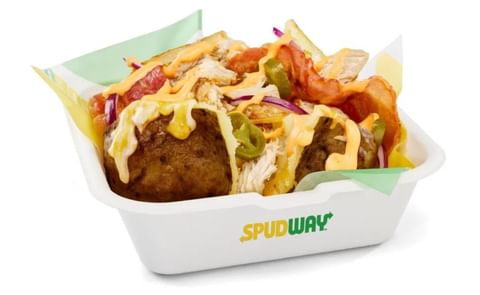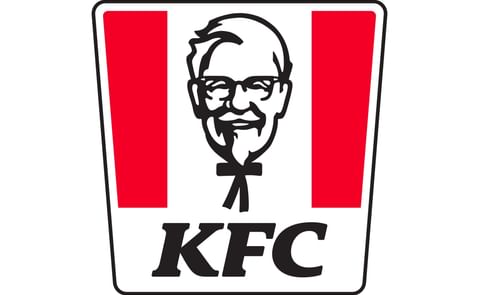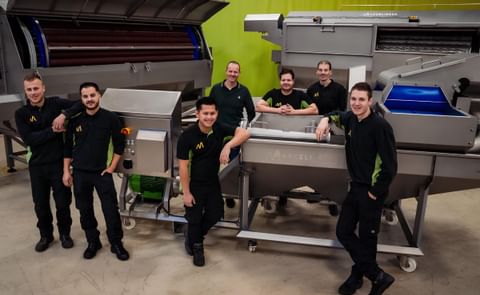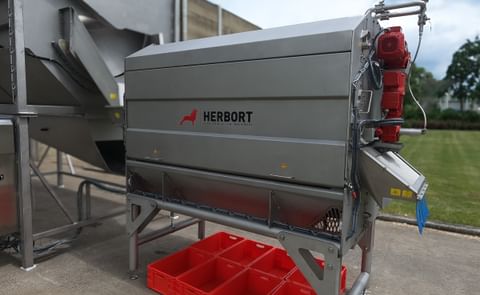Lockdown 2.0 (UK) is here – AHDB reflects on what it means for the potato industry
Lockdown 2.0 (UK) is here – AHDB reflects on what it means for the potato industry

Lockdown 2.0 is upon us and this brings widespread closure of pubs and restaurants once again. Although the rules differ across the country, with Wales’ firebreak rules coming to an end, Scotland experiencing regional restrictions, and England in a full national lockdown.
This will inevitably affect the potato industry, but the effect is unlikely to be as dramatic as the first lockdown.
Casting our minds back to March, certain items, including potatoes, were flying off supermarket shelves as the nation seemingly went into a state of panic. As well, almost the entire foodservice sector closed down with minimal notice.
This time around, although there have been reports of some panic buying, it has certainly been at a much lower rate than back in the run-up to lockdown 1.0. It is expected that retail sales will remain strong once again but it is likely to be more consistent this time.
On the other hand, we have the foodservice sector. We know last time this sector was hit particularly badly with dine-in premises’ forced to close. Not just this, but places that may be deemed as takeaways, such as fish and chip shops and large quick-serve restaurants (QSRs), were also forced to cease trading while they transformed their business to abide with Covid secure ways of working.
As a result of the first lockdown, many businesses within the foodservice sector are better prepared to adapt to a takeaway/delivery service.
Chipping (Fries)
In March, nearly all fish and chip shops were forced to close their doors. We saw a complete loss to this market for at least 3 weeks. But, even after that, when shops did start to reopen under new regulations and ways of working, it was slow and with low volumes of throughput. Before lockdown measures eased, it was estimated that up to 95% of shops had reopened in some form but at greatly reduced capacity.
In this lockdown, it is likely that those businesses will resort back to their previous way of working with a much smoother transition. This time of year is usually relatively quiet for the chipping trade anyway due to the lack of tourist trade.
In the chipping sector, we might see some further reductions in material moving over to Ireland although reports suggest this was already slow with Ireland entering a second lockdown on 22 October for six weeks.
Processing
The loss of dine-in trade will certainly have some effect on the processing sector, just as it was starting to return to a trade position closer to those seen in 2019. However, as with fish and chip shops, many pubs and restaurants are in a better position to transition into takeaway and delivery services. As well, major QSRs are also staying opening this time around which will help with the continuation of the processing trade.
Demand for food delivery services, such as Just Eat and Deliveroo surged throughout the pandemic. A report from GlobalData suggests an additional 11,500 restaurants joined Deliveroo since the start of the pandemic showing just how strong the demand is from these sorts of platforms. Total takeaway sales of potatoes have seen an increase of 29% year-on-year for the past 24 weeks (ending 4 October).
It is likely to demand will remain strong as in previous recessions we know takeaways remained important to consumers and clearly it did through the previous lockdown too.
We have also seen an increased demand for processed potatoes sold through retail too throughout the pandemic. Retail sales of processed potatoes grew by 11% over the last 6 months (24 weeks ending 4 October). Both the frozen sector, primarily frozen chips, and crisps and potato snacks saw strong growth throughout this time and this is expected to continue in the second lockdown.
Packing
Similarly to lockdown 1.0 retail will likely remain strong just maybe with less of a peak. We know from previous experience that lockdown brings a change in consumer habits and a rise in home cooking.
Fresh potato sales over the last 6 months (24 weeks ending 4 October 2020) through retail, by comparison to the same period in 2019, have seen a growth of 19% according to Kantar data. Maris Piper has been performing particularly well, with this variety recording year-on-year growth of 53%.
Potato sales through retail will likely remain in growth throughout this second lockdown as it remains a staple in people's diets and deemed an economic and filling option.
Christmas
In retail, we would usually see an uplift of potato sales throughout December and this year we could see this being less prevalent. It is very unclear at present, what Christmas is going to look like, but we know we won't be seeing large-scale gatherings. There is optimism that families will be able to share Christmas dinner together, keeping some demand for the potato sector.
However, with smaller gatherings, this might mean the growth usually seen at Christmas could be slightly reduced. Depending on what decision is made regarding the reopening of pubs and restaurants we could also see trade at lower levels than normal here too.
We will not be experiencing the large Christmas parties usually occurring throughout December, although this was already anticipated before the announcement of the second lockdown.
As such, the effects we could see at Christmas are less so governed by the current second lockdown, but more so by the coronavirus pandemic as a whole. However, the length of the lockdown will have an impact.
If it continues past the proposed 2 December then it will certainly eat into the Christmas celebrations. Even if they were to be on a smaller level, potatoes would have remained a key ingredient to Christmas dinners so a pro-longed lockdown may hamper potato sales somewhat.

